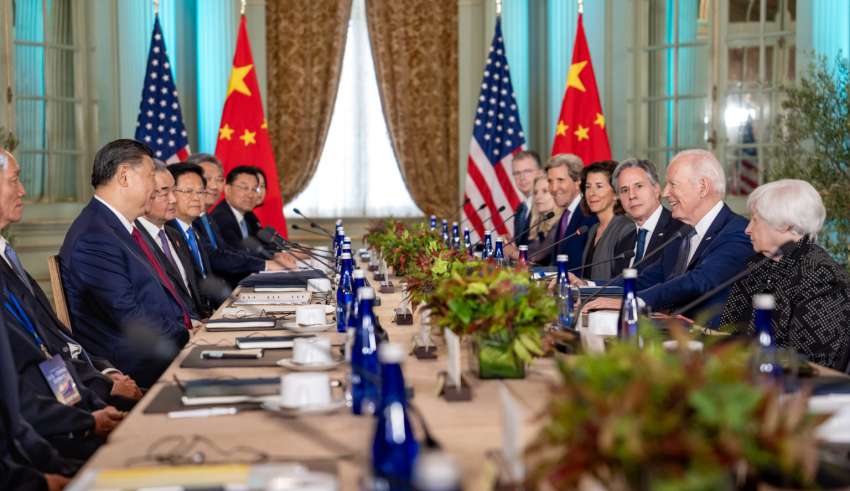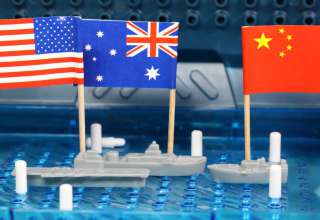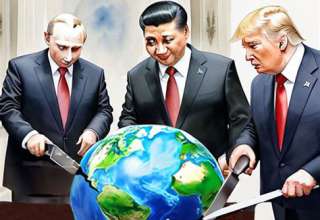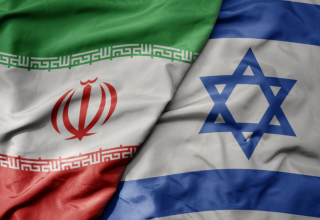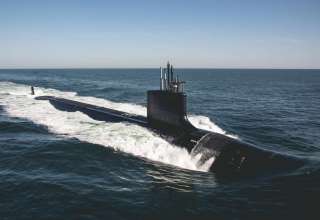By Richard Stone
Any controversy surrounding the economic basis of the present Cold War should reference recent statements from the White House and reliable banking and financial assessments about Gross Domestic Product (GDP) growth rates. While the combined weight of the G7 economies have difficulty remaining in the top hundred for GDP growth, those countries associated with the BRICS, however, are presenting a credible challenge to US hegemony in the global economy, together with defence and security considerations. The US response, has, therefore, been to impose tariffs.
Accusations, from the White House, in early July, that the BRICS trade body were pursuing ‘anti-American’ policies, has removed any cover for the US openly pushing Cold War policies. (1) The threat, by the Trump administration, to add an extra ten per cent tariffs on BRICS members, is evidence, in itself, of serious economic measures. (2)
The problem which has emerged is the success of the BRICS to challenge traditional US-led hegemonic positions by becoming ‘a counterweight to Western influence in global institutions’. (3) The fact the trade body has actively sought to ‘reduce their dependence on the US dollar’ has sent the Trump administration into tailspin, as they grapple with economic malaise. (4)
It is not difficult, therefore, to see the Wall Street lobby inside the US Republican Party having Trump and his far-right associates as their choice as president. He serves their purpose; his paranoid political positions reflect the economic malaise.
The developments have had serious diplomatic implications.
While the BRICS are intent upon planning to ‘build an alternative … to the … G7’, members of the Western trade body have difficulty even staying in the top hundred of countries when ranked by GDP growth rates. (5) While the G7 continue to export finance capital as foreign policy to those countries which subsequently provide high dividends for shareholders, moves away from the BRICS using the US dollar have presented stormy clouds on their economic horizons. The eventual cloud-burst will totally alter the financial position of the US, with allies and adversaries alike.
In fact, data from reliable US sources has provided the following table:
G7 Member Country GDP Growth Rate (2025) (6) Ranking/Globally (2023) (7)
Germany 0.0 per cent 194
Italy 0.4 per cent 176
Japan 0.6 per cent 151
France 0.6 per cent 168
UK 1.1 per cent 184
Canada 1.4 per cent 160
US 1.8 per cent 113
The BRICS, meanwhile, now account for nearly fifty per cent of the world’s population and 35 per cent of total global GDP. (8) With each new member its influence continues to grow.
The announcement, by the BRICS, that they were pursuing a challenge to the United Nations Security Council, has also led the economic basis of the Cold War into defence and security considerations.
Western defence and security provision rests upon the Five Eyes elite intelligence-sharing body: the US, UK, Canada, Australia and New Zealand. Of the five members, only Australia is in the first hundred of countries ranked by GDP growth rates. Placed at number 98 it did manage 3.44 GDP growth rates. (9) Its regional Five Eyes partner, New Zealand, however, scrapped a mere 0.73 per cent GDP growth rate and remained ranked at 174. (10)
The fact the US rely upon Australia and New Zealand as hubs for ‘US interests’ and a regional role in the Indo-Pacific region, has raised, therefore, some concern in both Washington and the Pentagon. The Trump administration appear intent upon demanding allies boost their defence spending, following US-led intelligence assessments which portray fictitious threats to sovereignty from adversaries. Allies have tended to assess outstanding and realistic problems rather differently, and use standard diplomacy.
The Trump administration, however, are increasingly despotic, and clutching at straws. Those acquainted with the classics have little difficulty identifying common patterns of behaviour as dominant countries and regimes slip and slide into the historical process of their own making. Hegel (1770-1831), if he was still alive, would have had a field day. His Philosophy of History, could be extended to the present day, two centuries after its initial publication.
The US have difficulty responding to credible challenge, particularly from those associated with BRICS.
Last year, for example, the US spent US$882 billion on national debit interest payments; the first time such payments had exceeded the defence budget of US$874 billion. (11) The defence budget, nevertheless, underlies Wall Street and the military-industrial complex. It is marked by high corporate profits, and the dividends for shareholders, likewise, remain lucrative. Presidential administrations have no wish to upset the apple-cart and alienate support from those quarters, which are composed of powerful and influential figures.
Defence contractors, working for the Pentagon in Afghanistan, for example, were able to amass nearly US$108 billion over a twenty year period. (12) It was a lucrative business. When the whole facade of US-led military operations in the country fell away, the US quietly walked away to avoid too much unnecessary publicity, switching attention elsewhere, where returns on dividends took precedence over practical considerations.
Numerous conspiracy theories continue to resound about why the US were even concerned about establishing a foothold in Afghanistan. One of the more plausible explanations was that senior presidential figures close to the Bush family were keen to exploit oil and natural gas reserves in the Asia countries of the former Soviet Union. The planned pipelines, however, proved problematic; the US were not keen to pipe their ill-gotten gains across the Russian Federation for basic security reasons and, therefore, planned to use Afghanistan as a logistics hub and bridge. The US foreign policy toward the country and surrounding region then followed a logic best known to only themselves. The fact that none of the countries concerned wanted much to do with the US was not anticipated; and once the US were into Afghanistan and had established their presence, they saw no reason to plan their departure.
Another conspiracy theory about US involvement in Afghanistan is that its origins lay in support for Osama bin Laden who was the main World Anti-Communist League (WACL) representative in the country. In fact, the WACL actively pushed bin Laden as the main conduit to challenge the role of the Soviet Union which supported the government in Kabul,
with tee-shirts carrying the caption, ‘Support the Afghan Freedom Fighter, He Fights for You!’ amongst US young people. (13) The US foreign policy then followed its own logic, as the Soviet Union withdrew its support and the US moved into fill the vacuum.
The formulation and implementation of such policies, however, have become problematic.
And extremely expensive. As the struggle to pay debt becomes ever more important, domestic considerations arise whereby a presidential administration has to prioritise spending; some scenarios are not, necessarily, popular with the electorate who rely upon services in their everyday lives. And presidential administrations rise and fall on their popularity with voters. In foreign policy, likewise, prioritising spending invariably leaves some areas vulnerable, following a decline in government support in outlying and remote areas; the longer-term implications might prove eventually quite drastic. The closure of most USAID programs, particularly in the Asia-Pacific region, is but one example; it knocked a large dent in US-led hegemonic positions across a region already assessed by US intelligence services as under siege from China’s softer-style diplomacy. (14)
In depth studies of the US economy have, therefore, concluded that the burden of debt has left the ‘power increasingly vulnerable to military challenge’. (15) And the US is a ‘great power in decline’. (16) Under such circumstances it is not difficult, therefore, to observe how the paranoid and siege mentality of the Trump administration has replaced standard political and diplomatic protocol; it has drawn upon an increasingly fascist-style position and method of operation both in domestic and foreign policies. (17) They appear well under-way to eventually falling on their own petard. The imposition of arbitrary tariffs by the Trump administration on allies and adversaries alike, moreover, is symptomatic of an erratic behavioural pattern where high-level decision-making has been conducted on the day-by-day basis with scant regard for more sensible and practical longer-term alternatives. Their vision is limited. And, invariably, only short-term.
1. Prabowo ties flag to BRICS mast, The Australian, 8 July 2025, and, Indonesia goes to Rio, at a cost, Editorial, The Australian, 9 July 2025.
2. Ibid.
3. Trump says BRICS nations are ‘anti-American’, and, Trump threatened to punish BRICS nations for ‘anti-American policies’, The New Daily (Australia), 8 July 2025.
4. Ibid.
5. Ibid.
6. IMF: World Economic Outlook Database (2025).
7. World Factbook (CIA.gov), Real GDP Growth Rates, (2023, estimates).
8. Australian, op.cit., 8 July 2025.
9. IMF (2025), and World Factbook, op.cit.
10. Ibid.
11. Albanese on collision course with Trump, The Australian, 27 June 2025.
12. Pentagon contractors in Afghanistan, change.org., 23 August 2022.
13. See: The WACL., Therry Meyssan, voltairenet.org., 12 May 2004, Footnote: 17.
14. Study: US no longer dominant power in the Pacific, Information Clearing House, 22 August 2019.
15. Ferguson’s Law, HWP: 202502, The Hoover Institution, History Working Papers, 21 February 2025.
16. Ibid.
17. See: Republicans, Authoritarians, Anti-Semites, and Fascists, Old Nazis, the New Right and the Republican Party, Russ Bellant, (Boston, 1988), page 2.

